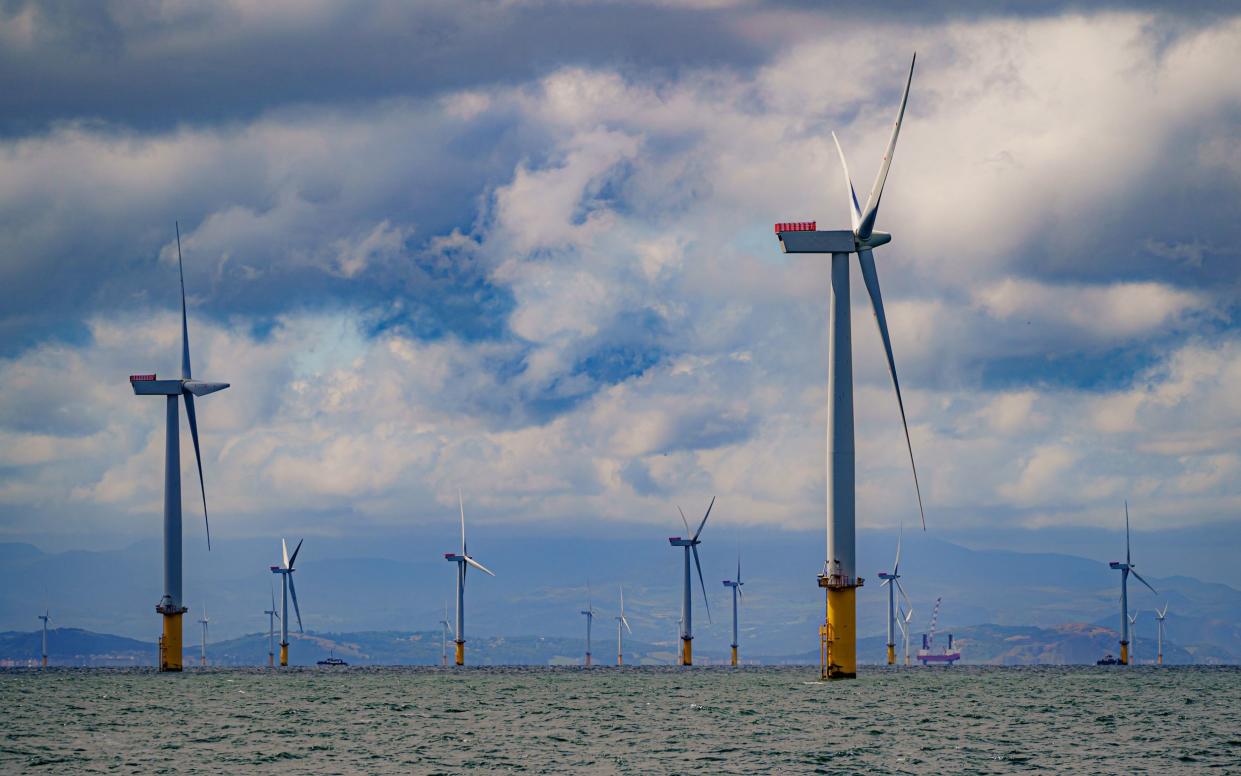Wasted wind power could add £150 to household energy bills within two years

Wasted wind power could cost households an extra £150 on their energy bills within the next two years, analysis has found.
Producers are paid to switch off at times of high wind to stop the grid becoming overwhelmed because a lack of infrastructure means the power cannot get to where it is needed.
At the same time, alternative energy producers such as gas plants must be paid to fill the gap in supply at times of high demand.
During 2023, these bottlenecks meant enough electricity to power around one million homes was curtailed, adding around £40 to household bills, according to think tank Carbon Tracker.
Since the start of the year around five percent of Britain’s wind energy production was lost because of the inability to transport it to consumers, the think tank said.
As more wind power is built in Scotland, where it is easier and cheaper to develop, wind curtailment costs are expected to increase over the next few years.
Payments could reach around £150 a year by 2026, rising to £200 by 2030, Carbon Tracker found.
Demand is soaring
Demand for electricity is expected to grow as more electric cars and heat pumps are connected, and the Government has vowed to dramatically increase wind power to help meet net zero goals.
“The reason why wind curtailment is growing year on year is that while we install more wind turbines in Scotland, we are not installing enough cables to transport electricity to the right places,” said Carbon Tracker analyst Lorenzo Sani.
“While wind turbines play a massive role in reducing electricity prices we are losing on some of these benefits because the grid is not able to transport all the wind-based electricity to where it’s needed.”
A recent review by Ofgem found that generators are being told they may have to wait a decade before they can connect to the grid.
In recent months the Government and Ofgem have announced plans to speed up grid connections, including making it easier for some projects to jump the queue.
“This is extremely welcome, and we hope that implementation will be fast, allowing the construction of the much-needed bootstraps connecting Scotland with the south of the country,” said Mr Sani.
Transporting wind power will also require hundreds of miles of new pylons and overhead cables, expected to be built by 2030.
This includes a 112-mile-long power line between Norwich and Tilbury to connect two wind farms off the Suffolk coast that has already drawn protests in the area.
A spokesman for the Department for Energy Security and Net Zero said: “We’ve just announced major reforms to halve the time it takes to build network infrastructure – speeding up grid connections, supporting thousands of jobs and reducing electricity bills for households across Great Britain.
“This builds on Ofgem’s decision to accelerate nearly £20 billion of strategic transmission investment to help cut delays in projects up to 2030, including new capacity between Scotland and England, ensuring we continue to make necessary improvements so homes can be powered by cleaner and greener energy.”

